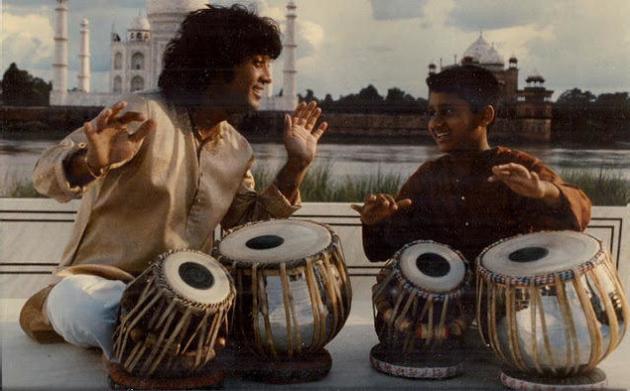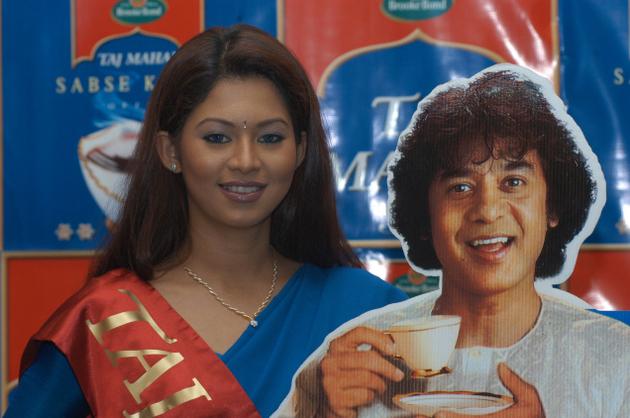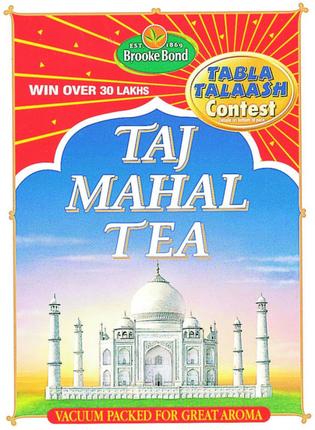
The “Wah Taj” campaign with Ustad Zakir Hussain not only engraved Taj Mahal tea on the popular imagination, it also helped the tabla to make its star space in the popular imagination
You have to admit it was a whacky idea. I mean, taken literally, who would you find to go and sit in front of the Taj Mahal and start practising the tabla? And then continue to sit right there, with India’s most famous monument as a backdrop, and sip a cup of tea served up by an anonymous hand? But it wasn’t just any old tea, it was Brooke Bond’s Taj Mahal, and it wasn’t just any tabla player, it was Ustad Zakir Hussain, one of the earliest ‘stars’ of Indian classical music. So, when the anonymous voice complimented his playing with “Wah Ustad, wah!”, the ustad replied with “Arre huzoor, wah Taj boliye!” And the entire nation was hooked.
Whether everybody began drinking Taj Mahal tea is not the question here, though that may have been important to the tea makers. But if it was consumer connect they were after, they hit a winner. Brand recall? The combination of “Wah Taj!” with the dashing young Hussain’s curly locks flying about his face as his fingers flew across the surface of his tabla — not to mention that charming smile accompanied by the resonance of his playing — ensured brand immortality.

It’s not surprising that the man commissioned to shoot that ad, Sumantra Ghosal, went on to make an acclaimed documentary on Ustad Zakir Hussain.
The tie-up between the tabla maestro and the tea company went on for a number of years, during which it must have helped that Hussain was not linked to any other product. The ad that added a phrase to the lexicon of modern Indians had a number of sequels. In one of them, an adorable little disciple keeps pace with the maestro and, in place of the disembodied voice, Hussain — hats off to the naturalness of his acting before the camera — praises the little fellow with “Wah, Ustad!” This time it is the cheeky little one’s turn to correct him, “Arre huzoor, wah Taj boliye!”

Aditya Kalyanpur is on tour in Goa when we contact him to look back on those early days. “I was around nine when I was invited by the ad company to do a screen test at Famous Studios in Mahalaxmi (Mumbai),” he recalls. It was his guru Ustad Alla Rakha — father of Zakir Hussain — that recommended him to the ad filmmakers, says Kalyanpur. “They were looking for kids to appear along with Zakir Bhai. But they couldn’t find any that played the tabla. So Alla Rakha sahib said why don’t you try this boy, he is playing well. Fortunately, they thought I was good looking and I could play.”
It must be a great thing to know that your guru has recommended you at such a young age as a promising artist. Agreeing that he has had many blessings in life, Kalyanpur says the elder ustad was “like a grandfather and mentor” besides a tabla guru.
While he was “excited and maybe a little intimidated” at the thought of playing with the celebrated Zakir Hussain, Kalyanpur says, “It was the beginning of a new chapter of my career. I learnt how to record, how to face the camera. Fortunately I started when I was very young.”
As for preparations, he says, “Zakir Bhai asked me to play a couple of relas — fast compositions. He picked one up and said let’s play this.” The audio recording was completed in Mumbai in only a couple of takes, but for the video for which they travelled to Agra, a few days were required. “In 1989, things were much different from what they are now,” he adds, referring to the changes in technology.
Kalyanpur agrees that the ad campaign, by emphasising the excellence of an ustad’s playing and juxtaposing it with its claim of a high quality tea, helped ordinary people become familiar with the concept of classical music and the tabla in particular. “Thanks to Zakir Bhai for reaching into people’s lives,” he remarks.
Some old-timers might have cringed at the idea of a serious artist allowing praise for his musicianship to be substituted with a lip-smacking pat on the back for a beverage — no matter how much a part of Indian culture that beverage was considered. If that shocked the purists, the 2001 ad (“Taj Mahal Challenge” of Hindustan Thomson Associates and HLL), really made them shudder. Here the ustad was shown staking a claim that if anyone found a better tea than Taj Mahal, he would quit playing his instrument. But, on the part of the ad makers, the idea was to simultaneously put the tea brand at the top of its category in consumers’ minds, and scotch wild rumours that had recently surfaced that Zakir Hussain was going to give up his performing career. By the time 2002 rolled in, contest winners were getting to meet the ustad and also receive a gold tabla set, for having ‘found’ his instrument, which his detractors — so the ads told us — had stolen since he could not be stopped from playing as no better tea brand had been discovered.
Time has proven that the partnership between the tabla wizard and the tea brand gave both their careers an enviably healthy longevity, and both are still going strong. And the brand’s classical music connection is expanding. Since this summer, sitar exponent Niladri Kumar has been the tea’s brand ambassador.
In recent years — another ad campaign, another beverage — we have been hearing that a lot can happen over a cup of coffee. But there’s no contesting, whirlwinds in a teacup are of an older vintage
source: http://www.thehindu.com / The Hindu / Home> Features> MetroPlus / by Anjana Rajan / December 14th, 2014








